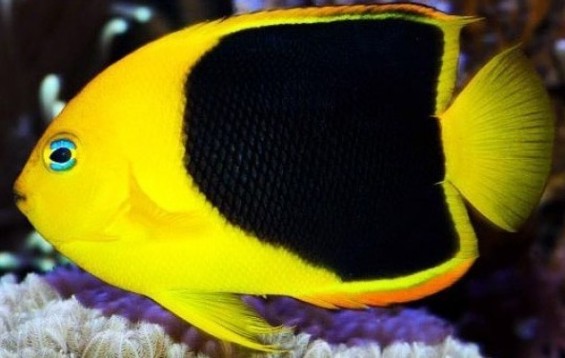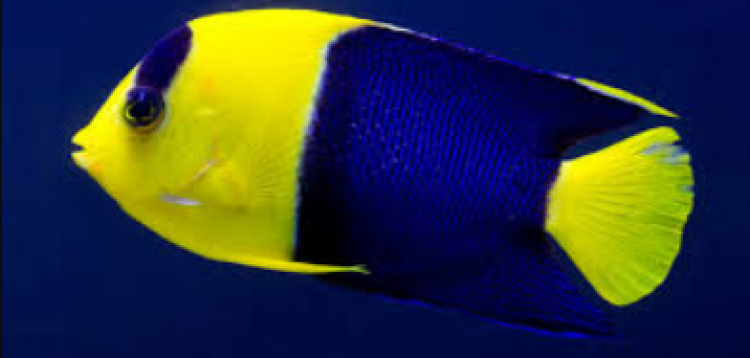- Name:
Rock Beauty Angelfish
- Family: Pomacanthidae
- Species: Angel Large
- Scientific Name: Holacanthus tricolor


General info about Rock Beauty Angelfish
The Rock Beauty Angelfish has a body that is predominately black especially on the back half, as an adult. The head and front half portion of the body, and the caudal fin are a bright yellow. The eyes have striking sapphire blue accents. Similar in appearance, the juvenile initially has a predominately yellow body with a large caudal black spot that just seems to enlarge, overwhelming the yellow coloration with the exception of the head, body area just behind the head, and the caudal fin.
Rock Beauty Angelfish Diet & Nutrition
Rock Beauty angels are known to mainly feed on sponges in the wild but they may also feed on tunicates, jellyfish, and corals, as well as plankton and algae. They are also known to feed on macroalgae in the the wild which includes Halimeda sp. and Mermaid’s Fan Udotea sp. In captivity, these angels may be fed with prepared foods with sponge material added.
Determining Sex of Rock Beauty Angelfish
Males are relatively larger than the female Rock Beauty Angelfish in a harem. Males also have trailing filaments off the top part of the tail fin and the tips of both the dorsal and anal fins.
Breeding & Spawning Rock Beauty Angelfish
Breeding in captivity for the Rock Beauty Angelfish has not yet been done in captivity. However in the wild, pairs will slowly rise up the water column while bringing their bellies close together, and releasing large amounts of eggs and sperm. Spawning usually occurs at night time.
Common Diseases with Rock Beauty Angelfish
Rock Beauty angelfish are susceptible to diseases that are borne within the captive saltwater environment such as Saltwater Ich or White spot Disease and Marine Velvet Disease. They are also vulnerable to viral infections such as Lymphocystis which are small nodules on the fish fins and mouth. This angelfish is also prone to contract parasitic infections such as monogenetic flukes.
Rock Beauty Angelfish Origin
Rock Beauty angels are found in the tropical west Atlantic Ocean from the coast of Georgia in the United States then south to Florida and to Bermuda, moving to the northern part of the Gulf of Mexico south to Santa Catarina and Brazil.
Caution with Rock Beauty Angelfish
They are known to nip at other tank mates, they become aggressive towards their own species kept in the same tank. They should not be housed in triggerfishes and other angelfishes as it will cause stress to the other fishes in the tank. They are also known to nip on corals.
Acclimating Rock Beauty Angelfish
When adding Rock Beauty angels in the tank, they should be added first, after it has acclimated, eating, and calmed down other fishes may be added to the tanks.
Original Detail
| Name | Species | Family | Scientific Name | More Detail | Added by |
|---|---|---|---|---|---|
| Rock Beauty Angelfish | Angel Large | Pomacanthidae | Holacanthus tricolor | The Rock Beauty Angelfish has a body that is predominately black especially on the back half, as an adult. The head and front half portion of the body, and the caudal fin are a bright yellow. The eyes have striking sapphire blue accents. Similar in appearance, the juvenile initially has a predominately yellow body with a large caudal black spot that just seems to enlarge, overwhelming the yellow coloration with the exception of the head, body area just behind the head, and the caudal fin. |
PalaciosAn |



